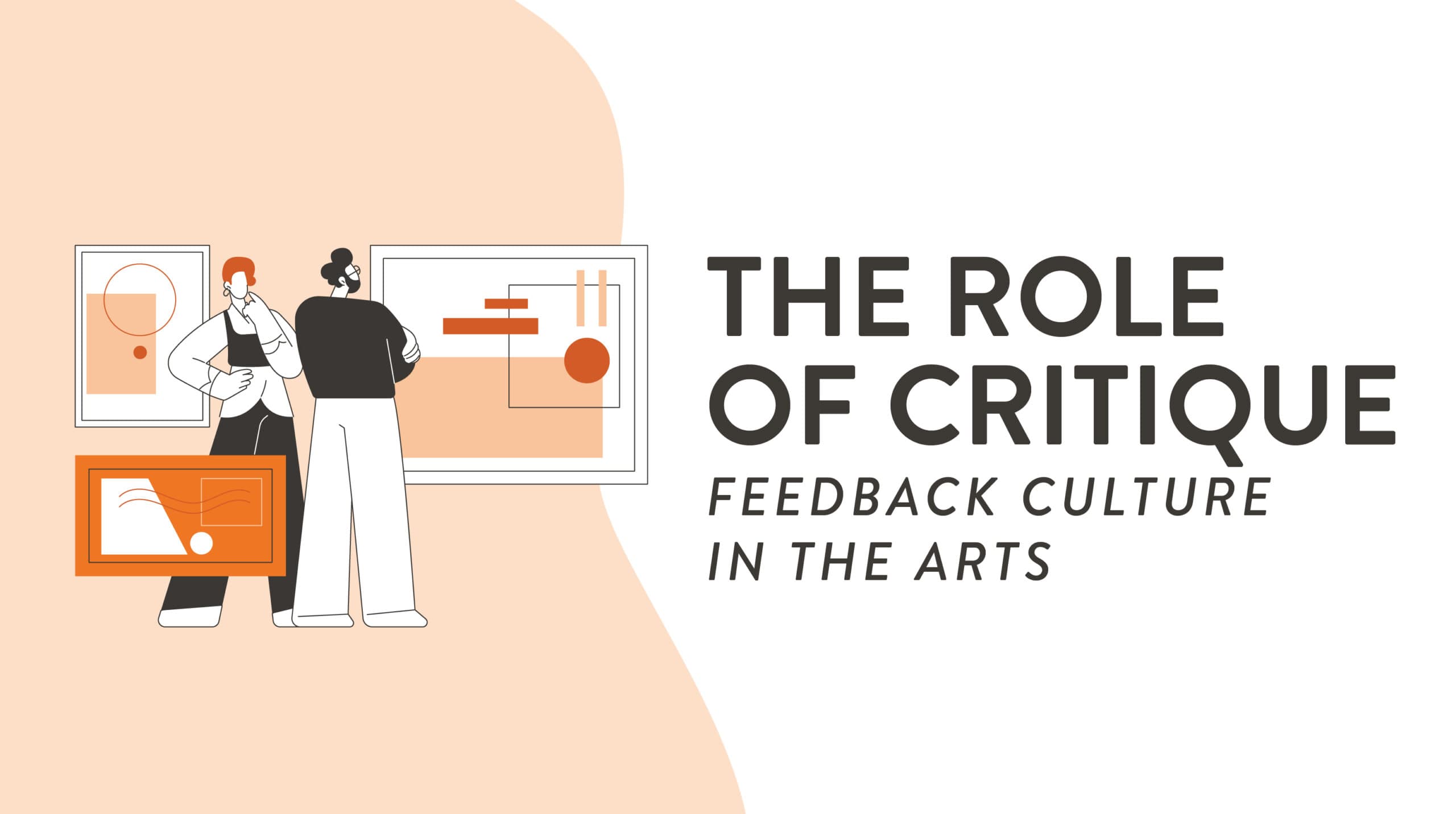When it comes to mastering your craft, no matter the industry, receiving helpful feedback and constructive criticism is crucial to one’s growth and professional development. This is especially true for artists who are constantly learning from peers, mentors, and instructors to continuously improve their abilities.
From formal and informal critiques to peer versus instructor feedback, each type of criticism offers the value of a unique perspective. Let’s dive deeper into these methods and more so that you can take advantage of feedback culture to better your art.
Understanding Critique in Fine Arts
The Purpose of Artistic Critique
Feedback from other artists can come from a variety of people and places. At a basic level, the purpose of a critique, or criticism, is to help improve you or your subject’s art. However, there’s more to the exercise than simply analyzing artwork. “The benefits of critique extend far beyond the art studio. It fosters critical thinking, encourages self-reflection, and cultivates a growth mindset,” Ms Artastic explains.
Practicing the tool that is art criticism prepares young artists for the professional world in many ways. Firstly, it teaches an artist to communicate with others in a respectful and helpful manner. Secondly, it gives artists a chance to reflect on their own work and learn new ways to improve. Lastly, it encourages artists to be lifelong learners and never settle for the status quo.
Historical Perspectives on Art Critique
Throughout history, art critique has long been a way for creatives to engage in meaningful conversations about the discipline. “Men and women have been talking and writing about buildings, sculptures, and paintings with discernment—and so practicing art criticism, in one sense of the word—for thousands of years,” A History of Art Criticism notes.
From the first century BCE to the current age, art criticism has evolved from simple, personal accounts to a learning environment on a global scale. Thanks to online learning programs, social media, and the internet, it’s easier than ever to receive feedback from peers and art professionals alike.
Methods of Critique in Art Schools
How do artists give or receive critiques? Let’s explore some key ways critiques can take place:
Formal vs. Informal Critiques
- Informal Critiques
Thanks to social media platforms, informal critiques seem to be at every turn for digital artists. However, it’s important to recognize when a criticism contains value or is mostly unfounded. Additionally, informal critiques don’t have to be online, they can simply be a classroom discussion about a classmate’s art piece. If the critique you receive wasn’t from a designated event or preplanned, you can likely consider it informal.
- Formal Critiques
Formal critiques are typically taken more seriously and contain some sort of structured process. Whether you are looking for a job or building your portfolio, a formal critique is what you’ll want to participate in. Whether an artist shares a single piece or a whole collection, extensive notes and feedback is provided to give the best possible chance of improvement to the artist. Keep in mind that art critique methods can vary depending on the critiquer’s skill level and the type of event.
Peer vs. Instructor Feedback
When receiving feedback from both peers and instructors, it’s important to recognize the value they both bring to your art.
- Peer Feedback
The benefits of peer feedback include increased communication with peers, considering new perspectives, and understanding what those of a similar skill level think of your work. Receiving feedback from a peer can be a fantastic way to make new friends, understand where your skill level lies, and receive feedback quickly. If you’re looking for advice from an artist with decades of experience, however, peer feedback is most likely not the best type of critique for you.
- Instructor Feedback
Feedback from an instructor can be extremely beneficial because they have worked as a professional in the industry and understand what it takes to be successful in the field. Whether through a class assignment or extra curricular project, professors are your best friend when it comes to quality feedback.
Building a Constructive Feedback Culture
Encouraging Constructive Criticism
According to The Kennedy Center, there are four major areas to focus on during constructive criticism in art: description, analysis, interpretation, and evaluation. Learning how to properly criticize other artists’ work is a great way to encourage positive constructive criticism in your art community. Done properly, critiques should come off as helpful rather than destructive.
Destructive Criticism
Speaking of destructive critiques, let’s talk about constructive vs destructive criticism. Destructive criticism is an unhelpful and even harmful way of giving feedback. Whether intentional or not, destructive criticism can undermine an artist’s hard work and self worth. If the criticism one gives attacks the artist as a person rather than their art, it’s most likely a destructive critique.
Handling Negative Feedback
Handling negative feedback can be a challenging skill to develop, which is why it’s important to separate personal and professional feelings for the benefit of your artistic skill. Negative feedback management is all about taking constructive criticisms of your work and building a meaningful plan to improve your skills. We recommend keeping these points in mind:
- Understand that most constructive criticism comes from a good place
- Use the feedback to improve your art
- Have a healthy discussion about the feedback you received
- Don’t stop creating, your work will only get better
Role of Critique in Professional Art Development
From Classroom to Career
There is a misconception that art critiques stop upon graduation, however, this is simply not true and artists should always be looking to improve their craft. Whether you are working in-house, as a freelancer, or in a museum, feedback from other artists is essential to one’s growth and development.
Continuous Learning and Professional Critiques
Art critique techniques in the professional world can look similar to critiques as a student. For example, if you are an illustrator working for a magazine, a creative director might give you direction to help you understand how your art is perceived by others as well as pushing you to the best of your ability. Similarly, if you want your work to be featured in a gallery, you will have to listen to feedback about your art from juried professionals and potentially make changes to your style or piece.
Ready to Join a Community of Creatives?
Understanding the importance of art critique and why it’s essential to growth is a great first step to improving your craft. Looking to join a community of creatives that are passionate about all things art and design? Learn more about Rocky Mountain College of Art + Design’s online and on-campus program today.

